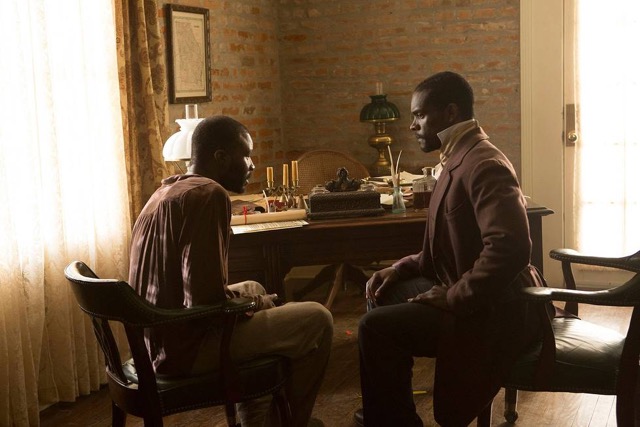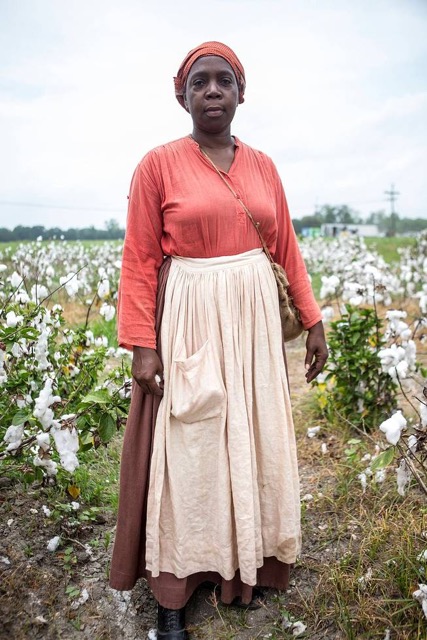Ask the Costume Designer: Karyn Wagner from “Underground” and “Preacher”
Karyn Wagner didn’t choose the film business as much as the film business chose her. The acclaimed costume designer comes from a long line of show people. She is a Los Angelos native (which is more rare than it might sound) and the third generation in her family to work in film. She started working on film sets after college and a friend told her that she was “the best-dressed camera assistant I’ve ever seen” and suggested she give costume design a go. “I was like, ‘Yeah, sure, let me give it a try. Why not?’” she says.
Thirty years later, she’s still making it work. She has many film credits including Lovelace (2013), Cake (2014), The Green Mile (1999), and The Notebook (2004). Her TV credits are no less impressive, including work on cult favorite Friday Night Lights (2006). Currently, her designs can be seen on both Underground (2016) and Preacher (2016), two shows that highlight her creative range.
Wagner is part designer and part alchemist. She is a visual storyteller in every since of the phrase.

Underground/WGN
ScreenPrism: With a show like Underground, which is a really intense period piece where the costumes are so spectacular and so beautiful, how do you stop yourself from doing too much and getting carried away?
Karyn Wagner: There are places where you can use excess, like the plantation owners, there’s almost never too much ornamentation to be done there. Then you contrast that against the house slaves, or the Northerners, who are much more austere, so there’s that. I think to answer your question most directly is to do whatever serves the character and helps tell the story. The writers have so brilliantly put these people on the page, and they are so amazing, and the characters are so compelling, and I feel as though I can see those characters walking around as I’m reading the script.
I guess that I function from deep within my gut, and I know it’s just too much when it’s not going to be believable. I know what makes sense. I’m also paring back more and more, finding that the less detail I have, especially if you’re in television, the more you concentrate on silhouette and the less detail you put in, the better able you are to tell the story. Versus features, where it is all about the details, because you have these lingering shots, people walk in and out of frames, people spend more time talking in frame, and so you have time to notice detail. But television moves so fast, you’re telling a story much more quickly, and the characters flash on screen so quickly in such quick succession, that you want to be able to identify them by silhouette, by fabric choice, and by color, as quickly as possible. That really helps you contain yourself.
SP: It’s like a composer who works with a certain theme in mind for a particular character. So that without putting too much work into it, the viewer can say this is this person, and I get where we are and what’s going on.
KW: Exactly. To go back to the composer idea, to have a leitmotif for various characters, you’ll get a bar, or you’ll get a few notes, and you’ll be like, “Oh, this is that character.” I’m doing the same thing with costume. He’s telling the story with music; I’m telling the story with costume. You want that quick, handy reference.
It’s very unconscious on the part of the viewer, most of the time. Sometimes there are things that are purposefully showy, but most of the time it’s evoking an emotion unconsciously about a character.
It’s what I call the covenant with the audience. You have a covenant with the audience to tell the story within certain parameters. You can’t go too far off topic, or the audience will be yanked out of the story, and confused, like “why is the slave catcher,” —I’m making something up here—“why is the slave catcher suddenly wearing tiger stripes?” [The costume designer] is like, “Well, he’s a slave catcher who listens to punk music.” And the audience is like, “Nobody told me that back story, so I don’t understand what’ you’re referencing.” You have a certain set of parameters in which you can tell that story.

Underground/WGN
SP: When watching a show like Underground, it’s very easy to appreciate the detail and the work and the research that goes into the costumes, but for modern pieces, or for even something like Preacher, is your process different?
KW: The approach is really so similar, especially between Underground and Preacher, because on Underground I really modernized the 1850s. I wanted the characters to be very, very accessible, so I incorporated more modern fabrics. After long discussions with the showrunners and the director and the production designer, we hit upon this narrow bandwidth, if you will, where everything references the period, but we’ve taken it to a place that may never have existed. You can’t know for sure because nobody’s seen the inside of every single household in 1857, but it seems unlikely that some of these things actually existed in the form that we made them. But we didn’t go too far off topic, again, so as to be distracting.
Preacher is such a very specific world. It’s based, as I’m sure you know, on the comic book by Garth Ennis, and is very, very dark. It’s very sardonic, much like me, and dark and tarry in its soul. For that, everything was just ever so slightly humorous and edgy. Nothing, except for maybe Tulip and Jesse Custer, really fit anybody quite right. That was on purpose. Things were just a little off, and our town was outdated by 15 years. That was all on purpose. Fashionable people would come in as extras and I would purposefully give them a bad hat with the wrong flowers, or add a country western vest, something that took them out of anything that you could say, “Oh, that’s a hipster from LA or that’s a hipster from New York,” and made them so very “every man.” Kind of Middle America, but just slightly dark.
SP:How much to you buy? How much do you source from vintage and charity shops? And how much do you make? Does it all depend on the project?
KW: It really depends on the project, and it depends on what’s available. Like on Underground, obviously very little was purchased. Most things we made or rented from a rental house. So much of that show was a build. On Preacher, you couldn’t make anything that bad, so it was really great that so much of it did come from charity shops or lower-end malls, mall businesses, the ones you walk into and you’re like, “No way somebody thought of that, decided it was a good thing, had it made, got it approved, and it’s in stores nationwide. I could not imagine it on my best day.” We were like, “There it is. It’s perfect. It’s the perfect thing.”
What can you do, on a show like Friday Night Lights, to make those character differences when it’s something where people are wearing uniforms, whether its high school football players or waitresses?
You tweak. One of the ways you tweak things is by tailoring, or not tailoring, or tailoring badly. I’ve been known to make a pair of uniform pants.
Going back to Preacher, for instance, or Friday Night Lights, I try and give each of the repeating characters or even our main characters a little something. Somebody’s a little dorky so their pants might be too short. Somebody just doesn’t care, so their pants don’t fit quite right. Somebody’s pants, they can’t really afford the actual uniform pants, so they went to the thrift store, and they got a pair that’s really close, so their pants are a tiny bit different. Even though you don’t notice it consciously, subconsciously we’re still hunters and gatherers, so we track all these things. We add them up almost mathematically in our heads. It’s amazing how much people know about the characters without really even remembering the details that added up to them being able to place that character.

